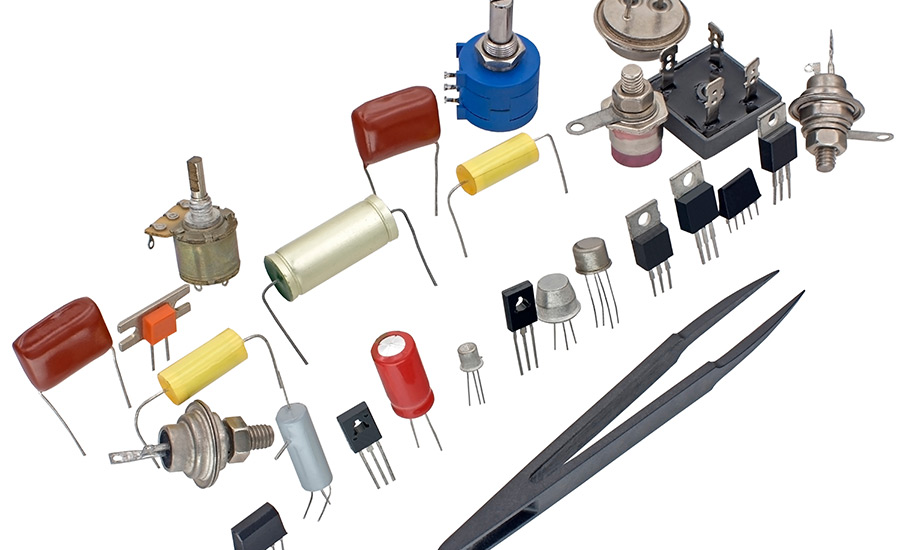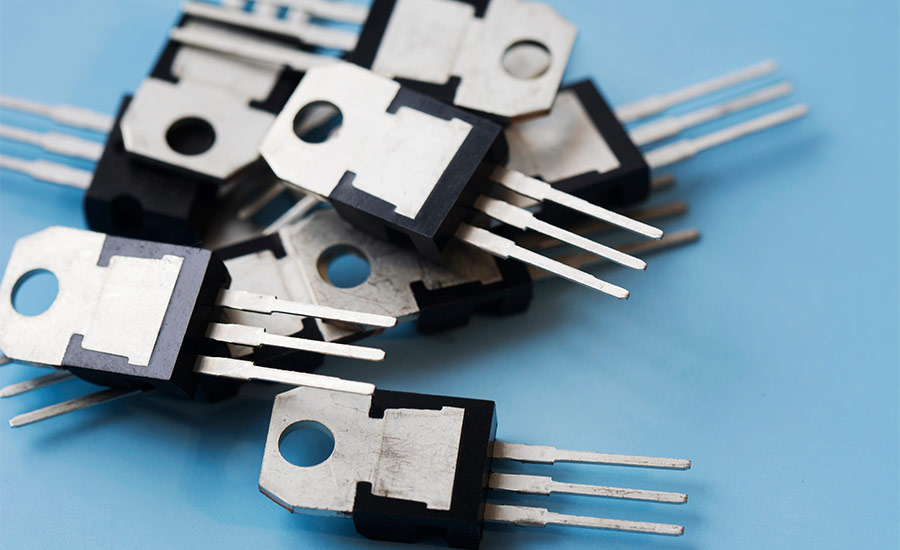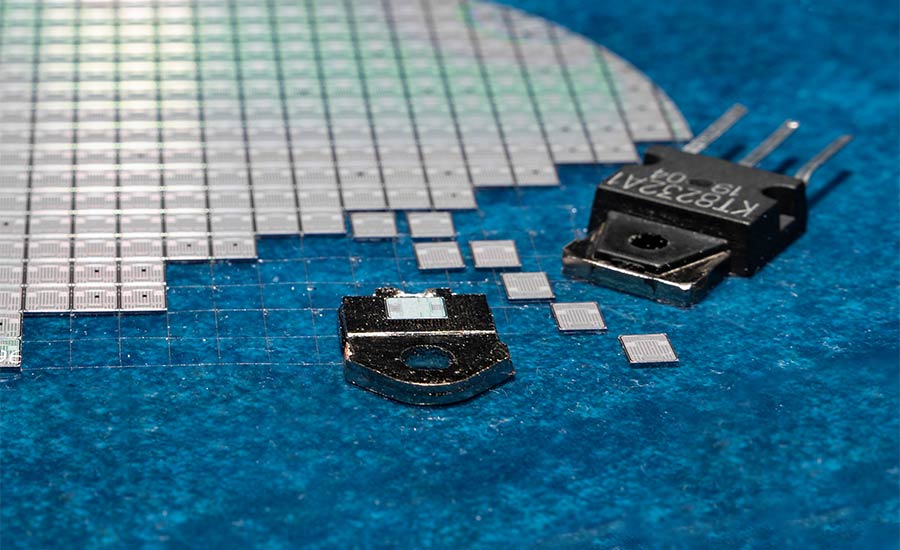
Transistors are the unsung heroes of modern technology, powering everything from the smartphone in your pocket to the servers running the internet.
Despite their small size, transistors revolutionized electronics on a huge scale by allowing us to control current and voltage with precision. Without transistors, today’s advanced electronics and computing systems would not be possible.
We’ll dive into the core principles behind transistors — what they are, how they work, the different types, and the role AGS Devices plays in their distribution.
What Is a Transistor?
A transistor is a tiny yet powerful semiconductor device that serves as a building block for modern electronics. It functions primarily as a switch or an amplifier, controlling the flow of electrical current in a circuit.
Transistors are made from semiconductor materials, typically silicon, that are doped (infused with impurities) to create regions with different electrical properties.
Transistors have three key parts: the emitter, base, and collector.
What Does a Transistor Do?
A transistor has two main functions:
- Switching: In digital circuits, transistors act as switches that can turn current on or off.
- Amplification: In analog circuits, transistors amplify signals, making them stronger.

How Does a Transistor Work?
To understand how transistors work, it’s important to break down the core principles behind their operation, starting with semiconductor materials and how they switch currents, amplify signals, and manage voltage and current.
The Concept of Semiconductor Materials
Transistors are built using semiconductor materials, primarily silicon. Semiconductors are unique because they can act as both conductors and insulators depending on certain conditions.
Manufacturers finely tune the electrical properties of semiconductor materials through a process called doping — which adds specific impurities.
This controlled conductivity allows transistors to manipulate current flow with precision. N-type and P-type semiconductors are combined in transistors to create pathways that either block or allow current, depending on the input signals.
How Transistors Act as Switches
One of the primary functions of a transistor is to act as a switch. In digital electronics, transistors toggle between on and off states, representing binary 1s and 0s.
When a small voltage is applied to the base (in a Bipolar Junction Transistor, or BJT) or the gate (in a Field-Effect Transistor, or FET), it controls a larger current flowing between the collector and emitter (BJT) or the source and drain (FET).
This ability to switch rapidly between states is what powers everything from logic gates in microprocessors to power regulation in devices.
How Transistors Amplify Signals
Transistors also function as amplifiers, which is key in applications like audio equipment and radio transmission.
When used as an amplifier, a small input signal at the base or gate results in a proportionally larger output signal between the collector and emitter (or source and drain).
This is because the transistor modulates the larger current based on the smaller input, effectively boosting weak signals. This principle underpins a wide range of technologies, from amplifying audio in headphones to boosting radio frequencies in communication devices.
The Role of Voltage and Current in Transistor Operation
The relationship between voltage and current is central to how transistors work. For BJTs, the current at the base controls the current between the collector and emitter.
In FETs, the voltage at the gate controls the current between the source and drain. This precise control allows transistors to manage power flow in circuits.
Different configurations — like common emitter, common collector, or common base — allow transistors to be tailored for specific functions, whether it’s switching, amplification, or signal modulation.
Different Types of Transistors
Understanding the differences between transistor types helps in selecting the right component for your specific needs.
Let’s explore the most common types of transistors:
Bipolar Junction Transistors (BJTs)
Bipolar Junction Transistors (BJTs) are among the most common types of transistors. They operate using both electrons and holes as charge carriers and consist of three layers: the emitter, base, and collector. BJTs come in two types — NPN and PNP — depending on the arrangement of the semiconductor materials.
They are typically used in applications requiring amplification, such as audio circuits and radio frequency amplifiers, due to their ability to provide high gain.
In a BJT, the small current at the base controls the larger current between the collector and emitter, making it suitable for both switching and amplification tasks.
Field-Effect Transistors (FETs)
Field-Effect Transistors (FETs) are another widely used type, and they differ from BJTs by relying primarily on one type of charge carrier — either electrons (N-channel) or holes (P-channel).
The most common FETs include Junction Field-Effect Transistors (JFETs) and Metal-Oxide-Semiconductor Field-Effect Transistors (MOSFETs).
In a FET, voltage applied to the gate terminal controls the current flow between the source and drain. FETs are prized for their high input impedance and low power consumption, making them ideal for digital circuits, voltage-controlled amplifiers, and power supplies.
A Comparison Between BJTs and FETs
While both BJTs and FETs serve similar functions, they have distinct differences that influence their use in specific applications. BJTs are current-controlled devices, offering higher gain and better performance in linear applications such as analog amplification.
However, they consume more power and are less efficient when switching is required. FETs, on the other hand, are voltage-controlled and more power-efficient, making them better suited for digital applications like microcontrollers and logic circuits.
Additionally, FETs generate less noise, which is why they’re preferred in sensitive signal processing tasks.
Specialty Transistors: MOSFETs, IGBTs, and More
Beyond BJTs and standard FETs, there are specialized transistors designed for more demanding applications. MOSFETs (Metal-Oxide-Semiconductor FETs) are commonly used in power electronics and digital circuits due to their high efficiency, fast switching, and low power consumption.
IGBTs (Insulated-Gate Bipolar Transistors) combine the high current-handling capability of BJTs with the gate control efficiency of MOSFETs, making them ideal for high-power applications like electric motor drives, inverters, and industrial control systems.
Other specialty transistors include Darlington transistors (for very high current gain), Schottky transistors (for low-voltage and high-speed applications), and photo transistors (for detecting light levels).

Key Applications of Transistors in Modern Electronics
Transistors are at the heart of nearly every electronic device, enabling the functionality of both analog and digital systems.
Digital Circuits
Transistors are fundamental components in digital circuits, where they primarily act as switches. They form the building blocks of logic gates, which perform basic operations such as AND, OR, and NOT — essential for processing data in computers, microcontrollers, and other digital devices.
In processors, millions of transistors work together to execute instructions, process data, and manage operations. Their ability to switch between on and off states rapidly is what makes modern computing, memory storage, and communication technologies possible.
Amplifiers and Oscillators
In analog electronics, transistors are widely used as amplifiers and oscillators. As amplifiers, transistors boost weak signals, making them essential in applications like audio equipment, radio transmitters, and broadcasting.
They are also used in signal processing equipment where clarity and strength are crucial. In oscillators, transistors generate repeating electronic signals such as sine waves, square waves, or pulses.
These oscillations are critical for devices like clocks in computers, RF circuits in communication systems, and timing controls in various automated systems.
Power Electronics and Switching Applications
Transistors play a significant role in power electronics, especially in managing the flow of electricity in high-power applications.
MOSFETs and IGBTs are frequently used in power supplies, motor controllers, and electric vehicles due to their ability to handle high currents and voltages with minimal energy loss.
In these applications, transistors switch power on and off rapidly, converting electricity efficiently for use in everything from industrial machinery to home appliances.
Emerging Uses in Advanced Technologies: IoT and AI
As technology advances, transistors are finding new roles in emerging fields like the Internet of Things (IoT) and Artificial Intelligence (AI). In IoT devices, transistors are used in sensors, actuators, and communication modules, enabling smart devices to connect and share data across networks.
For AI applications, transistors in advanced processors (like GPUs and TPUs) handle vast amounts of data, powering machine learning algorithms and neural networks.
These applications require transistors that are not only fast and energy-efficient but also capable of handling complex, parallel processing tasks.
AGS Devices: A Trusted Distributor of Transistors
AGS Devices specializes in the distribution of high-quality transistors, ensuring each product meets stringent standards.
Our comprehensive quality control system ensures authenticity and high-performance standards required in various applications.
We also distribute electronic components such as:
- Power Supply Distributors
- Semiconductors for Sale
- Optoelectronics
- Circuit Protection
- Interconnects
- Passive Components Electronics
- Electronic Testing Equipment
- Electromechanical Devices
We are dedicated to supplying transistors that are reliable and durable. The team at AGS understands the critical role transistors play in electronic circuits, and we have many procedures in place to ensure every component we distribute contributes to the optimal functioning of your projects.
As a leading distributor of capacitors, our goal is to boost the efficiency and reliability of your supply chain.
FAQs About How Resistors Work
Still have questions about transistors? Here is some additional information you might find useful.
How does a transistor open and close?
A transistor opens (allows current to flow) or closes (blocks current) by controlling the voltage applied to its gate or base terminal.
In a field-effect transistor (FET), applying a certain voltage to the gate creates an electric field that allows current to flow between the source and drain, effectively “opening” the circuit.
In a bipolar junction transistor (BJT), a small current at the base allows a larger current to flow between the collector and emitter. When the gate or base voltage is removed, the circuit “closes,” blocking current flow.
Do transistors dissipate power?
Yes, transistors do dissipate power, primarily in the form of heat. This power dissipation occurs when the transistor is either in the “on” state (conducting current) or switching between states.
In the “on” state, the transistor drops a small voltage across its terminals while conducting current, resulting in power loss as heat. In the “off” state, power dissipation is minimal.
Why use transistors instead of mechanical switches?
Transistors offer several advantages over mechanical switches. Unlike mechanical switches, transistors are faster, more reliable, and have no moving parts, making them ideal for high-speed applications like computing and signal processing. They can also amplify signals, something a traditional switch cannot do.
Why are smaller transistors better?
Smaller transistors are better because they offer faster switching speeds, reduced power consumption, and allow more components to be packed into a single chip, leading to higher performance and processing power.
